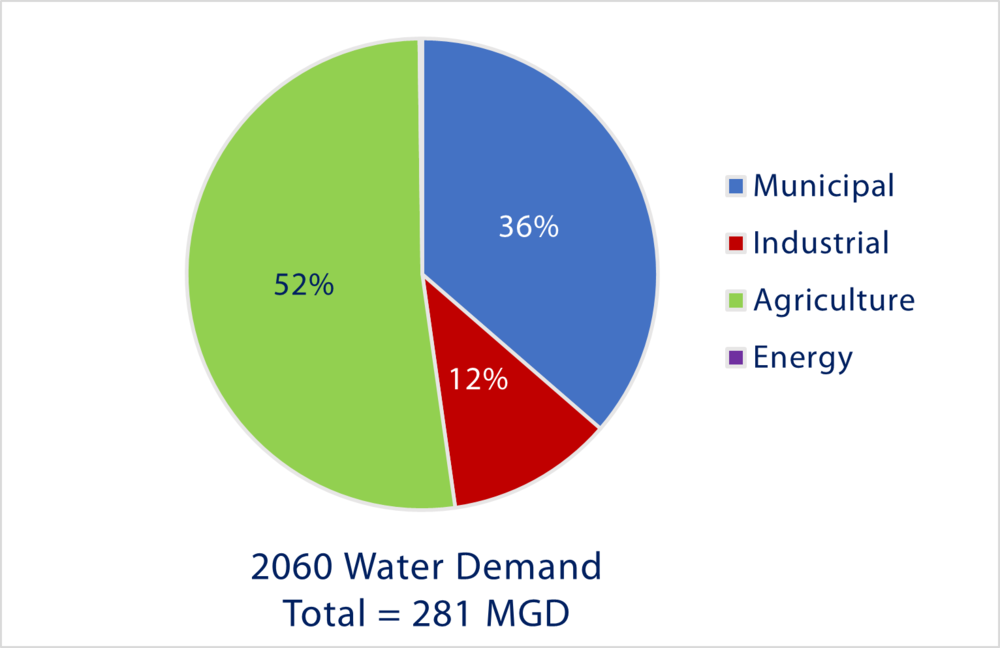
Middle Ocmulgee Region Technical Information
In support of the Regional Plan Update, separate technical memoranda were developed for both water and wastewater forecasting as well as a resource gap analysis.
Water and Wastewater Forecasting

Water and wastewater demand forecasts form the foundation for water planning in the Middle Ocmulgee Region and serve as the basis for the selection of water management practices. Forecasts are summarized within Section 4 of the
Regional
Water Plan
. Additional detail can be found in the Water and Wastewater Forecasting Technical Memorandum. A high-level summary of this technical information is also included on the Council’s
Fact
Sheet.
Although the region’s population is projected to increase by 21% between 2020 and 2060, the Middle Ocmulgee Region’s annual average daily demand is only projected to increase less than 1%. The small increase is due to the retirement of the power generating facility, Plant Scherer. Plant Scherer’s retirement will also impact the region’s wastewater flows, which, in total, will decrease 14% from 2020 to 2060.
Gap Analysis
The gap analysis compares the water and wastewater demand forecasts to the available resources. This material is summarized within Section 5 of the
Regional
Water Plan.
Areas where future demands exceed the estimated capacity of the source have a potential challenge that may be addressed through water management practices. Potential water resource challenges for the Middle Ocmulgee Region include:
- Need for localized groundwater monitoring for counties withdrawing from the Floridan aquifer.
- Need for additional permitted municipal withdrawal capacity in Crawford, Jasper, and Lamar Counties.
- Need for additional wastewater planning and treatment capacity in Newton and Lamar Counties.
- Potential surface water supply challenges for four facilities in Jasper, Lamar, Monroe, and Newton Counties.
- Potential high nutrient loadings into Lake Jackson and in the watersheds above Lake Jackson because of significant point source discharge contribution
- Need for additional watershed protection and management of non-point and point source discharges to further improve existing impaired stream status.
- Need for on-site septic system management in rural counties.